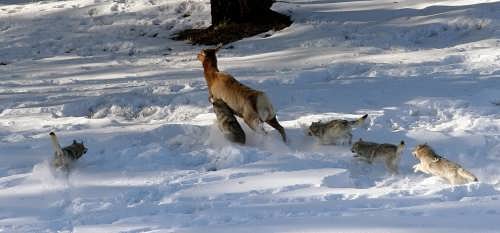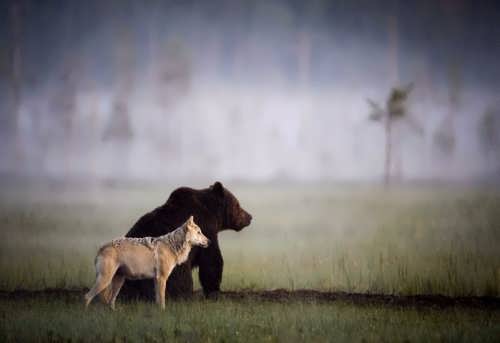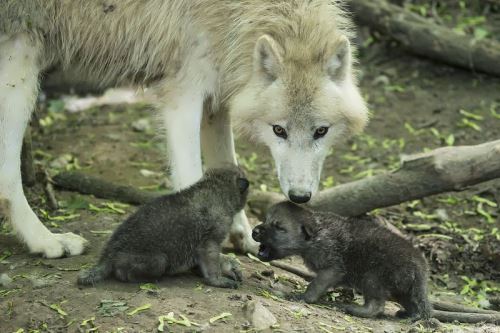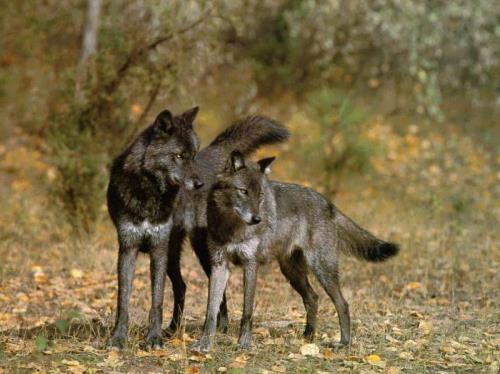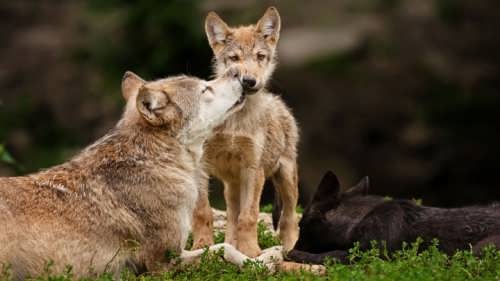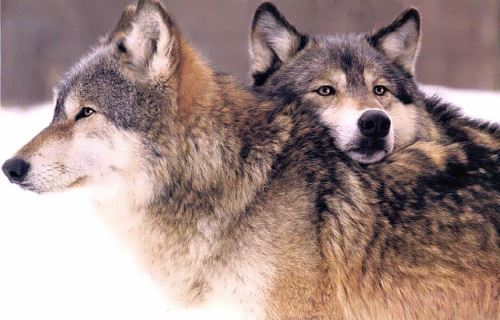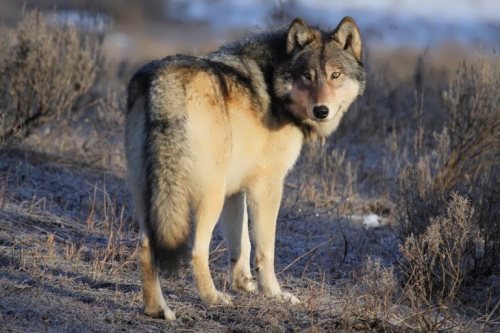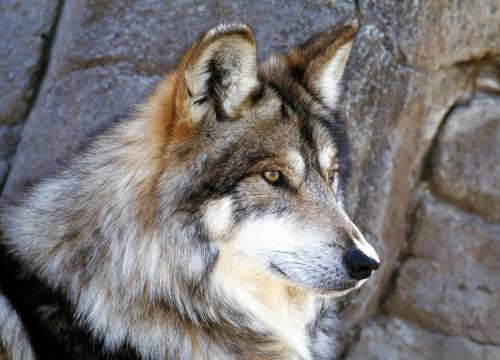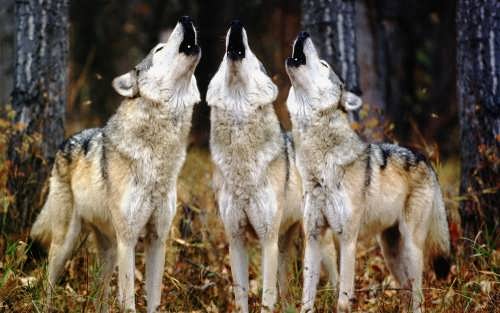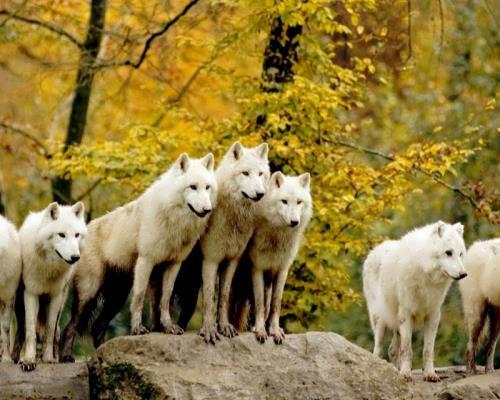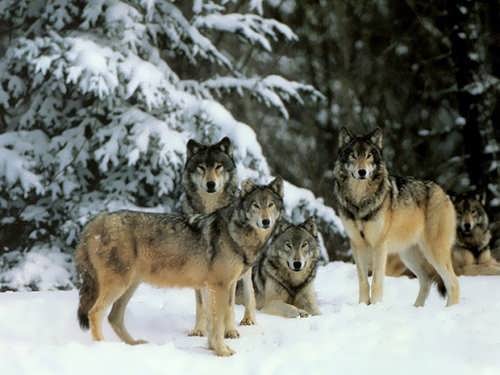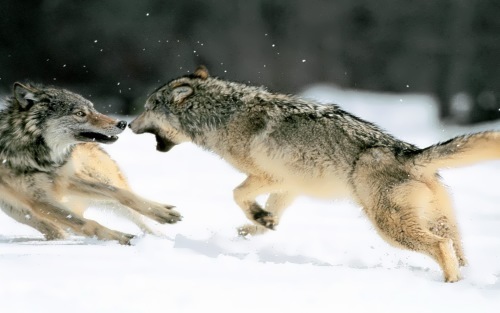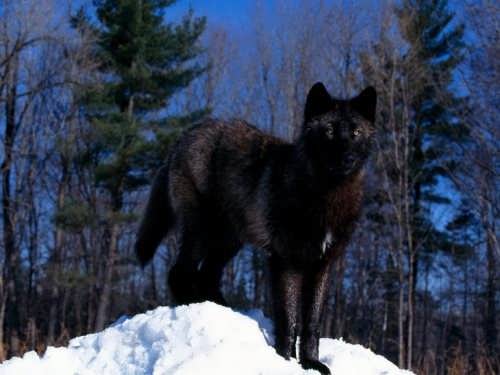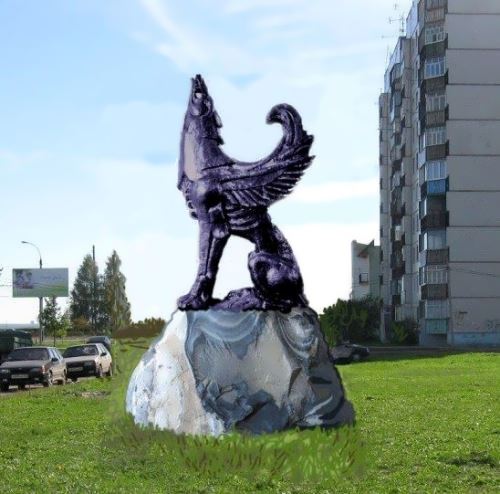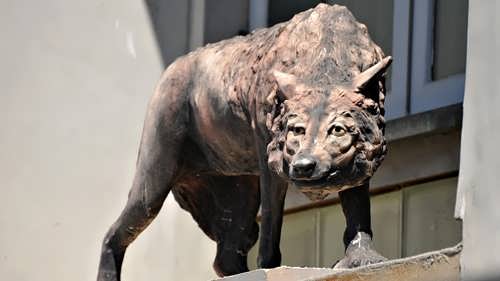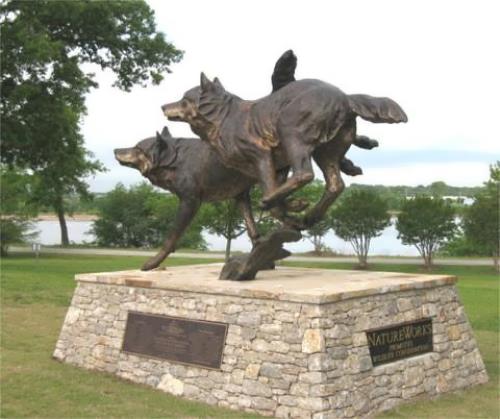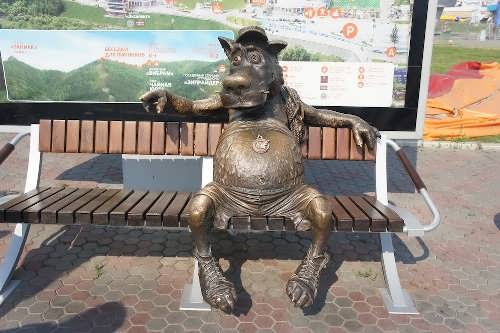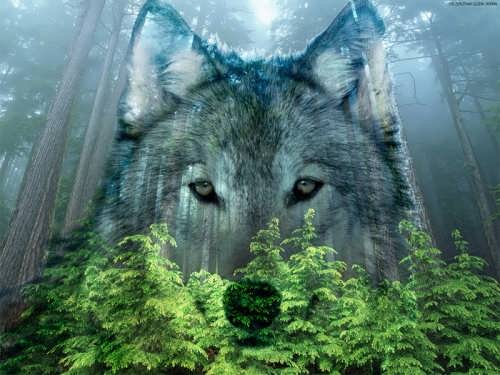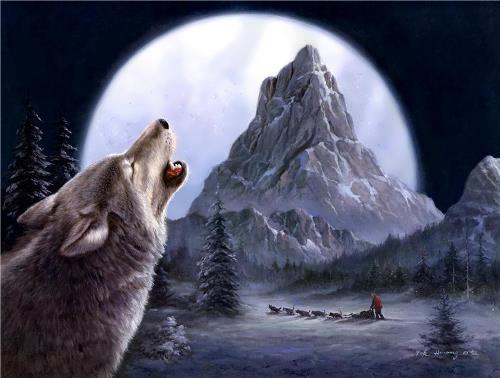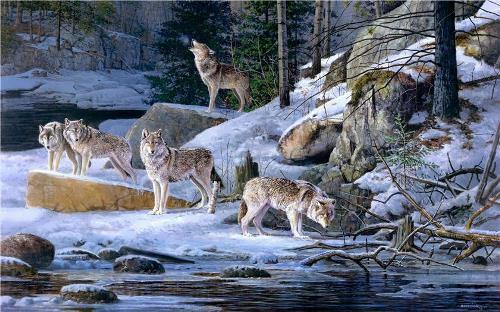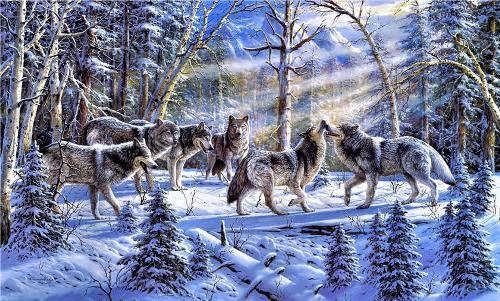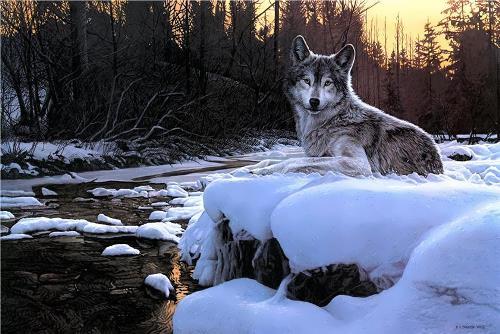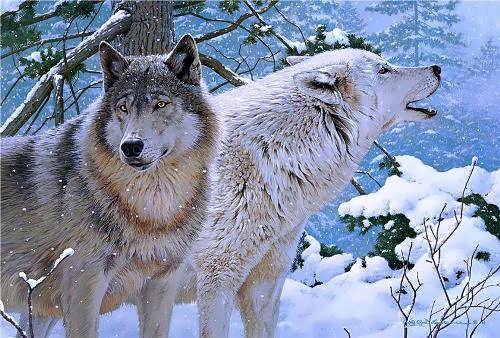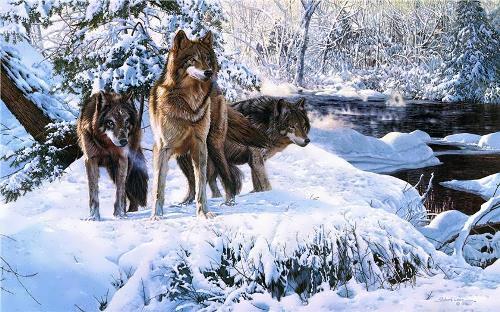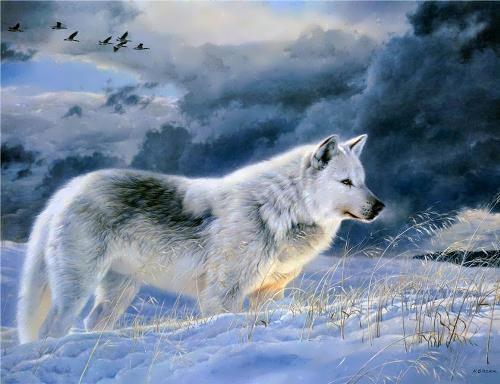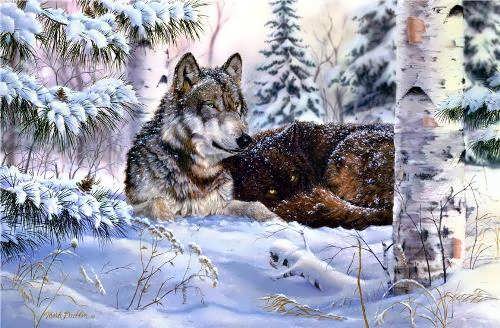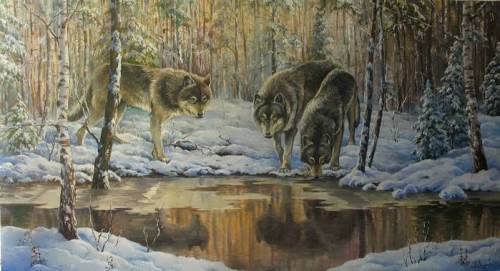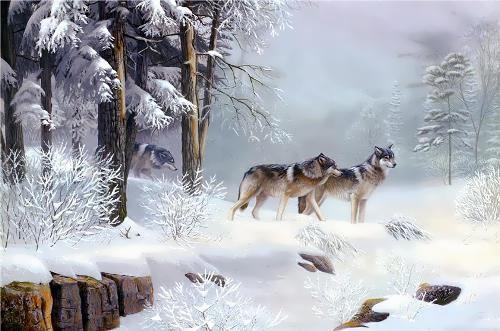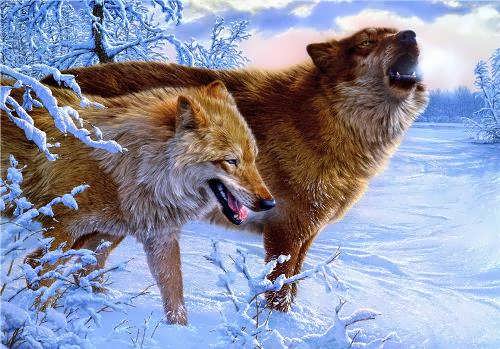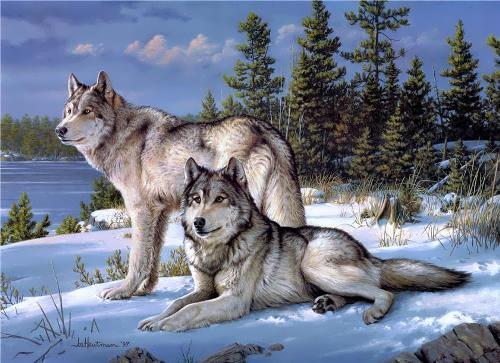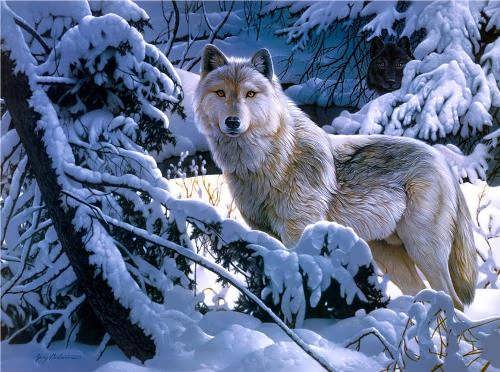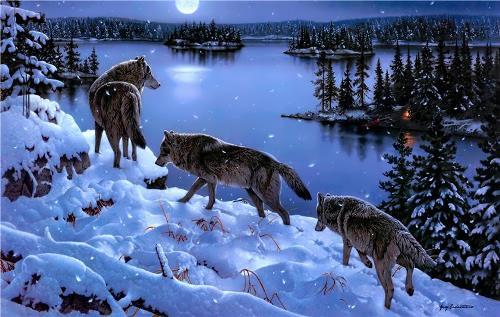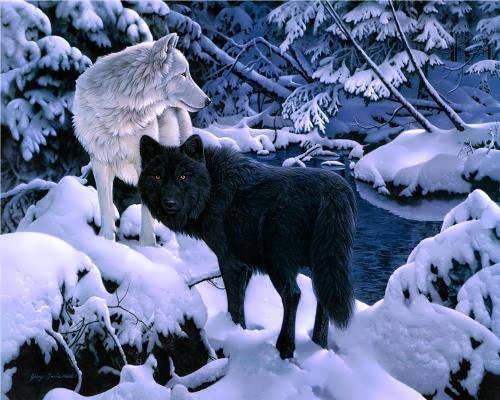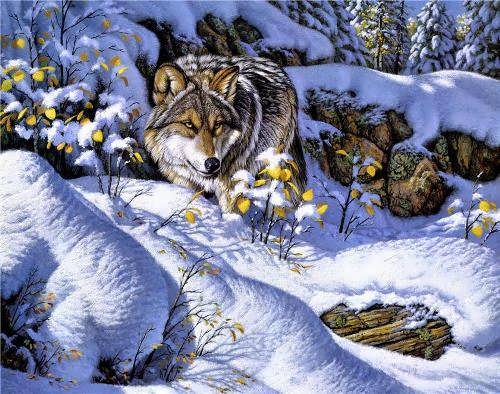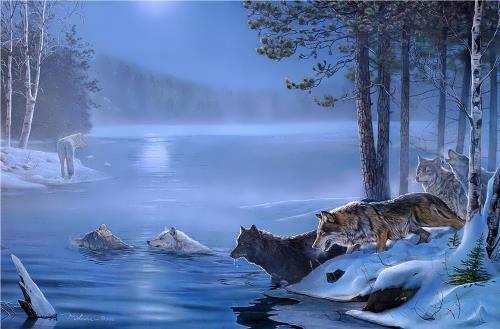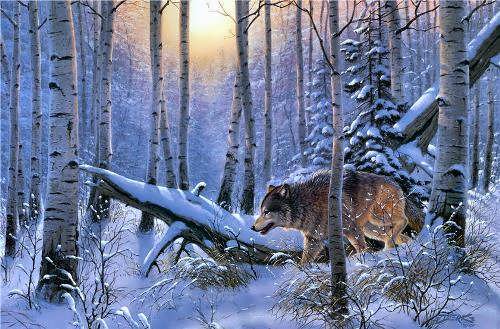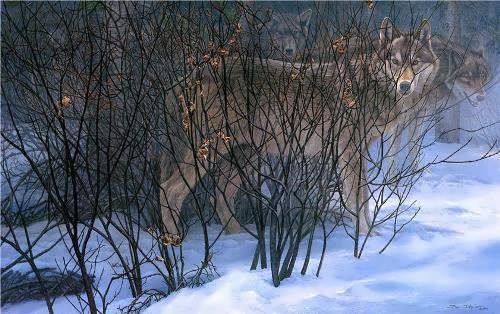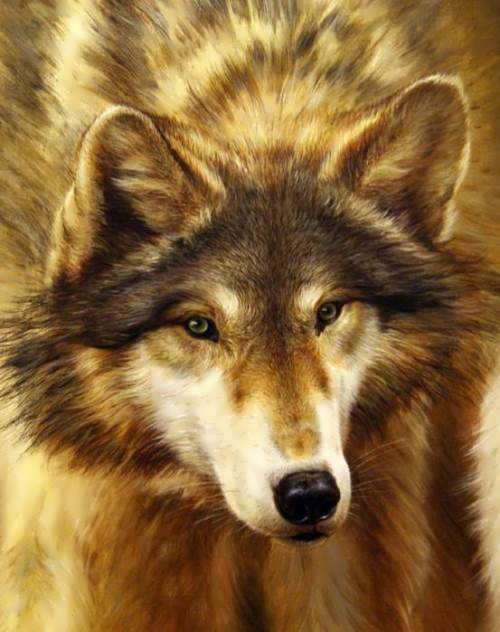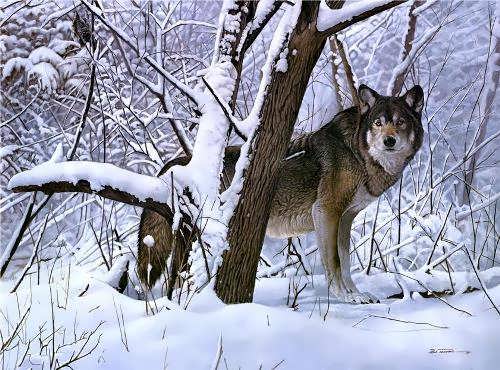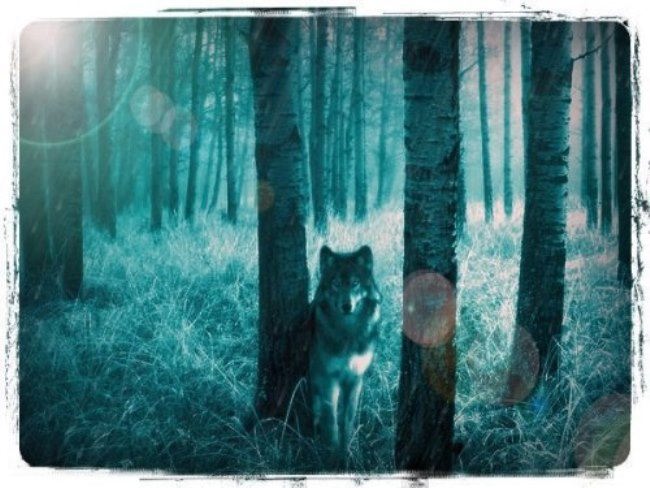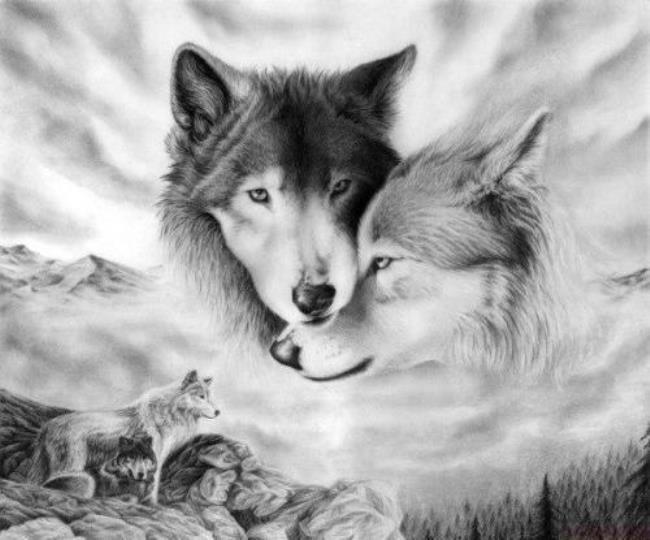Wolf – Noble Hunter
Wolves belong to the canine family. Their relatives include jackals, coyotes, dingoes, New Guinea singing dogs, wild dogs of Africa, and the domestic dogs.
Wolves are very intelligent animals. They are also quite social, living and hunting in family packs. The dominant male and female are both called alphas. The alpha female has the dominant role in the pack. Wolves communicate with fellow pack–mates and other wolf packs through facial and body postures, scent markings and vocalizations. Packs have 7 to 30 members, depending on how much prey is available.
Wolves feed on a variety of mammals from large hoofed animals such as elk and deer to smaller animals such as beavers and rabbits. Wolves hunt by using their keen senses and group cooperation. Wolves help control the numbers of rodents and deer.
In early spring, females give birth to an average litter of six pups. The young wolves begin hunting when they are eight months old.
There are three species of wolf. The best known is the gray wolf. It lives in North America, Europe, and Asia. The North American gray wolf, also known as the timber wolf, is the largest member of the dog family. It is 1.5 to 1.8 meters from nose to tail and can weigh between 32 and 50 kilograms. Females are slightly smaller than males. Some wolves are all black or all white.
Red wolf has a coat that varies in color from cinnamon to nearly black. It is about the size of a large dog. The animal’s most distinguishing features are its long ears and legs. Now most red wolves live in captivity.
All species of wolf are in danger of dying out. This is because their habitats are being destroyed and people kill these animals.
Wolf is a symbol of freedom, independence, and courage.
Gray Wolf in folklore
Wolf is a symbolic animal, as a creature that could see into the other-world. In some ancient texts we find references to wolves as shape-shifting people. The Irish legend tells of people who, descended from wolves, could still change into that form to prey upon their neighbors’ cattle, while another legend describes a family who turned into wolves every seventh year because of a curse, retaining human language and having prophetic powers. Julius Caesar reported that the Gauls believed themselves descended from wolves.
The belief that a person can change into a wolf has not completely died out, though modern cases consist of individuals who are habitual drug users or who have been diagnosed with a psychiatric disorder, such as schizophrenia. Two cases were reported in the Canadian Psychiatric Association Journal in 1975. Another case was presented in the American Journal of Psychiatry in 1977. The medical term for this condition is lycanthrope, which is Greek for “wolf-man.”
The ability to shape-shift into a wolf is a common element among many folklore traditions. In Saga of the Volsungs, composed in thirteenth-century Iceland, Sigmund and his son, Sinfjotli, became wolves. During their time as werewolves, they killed many men in the land of King Siggeir, who was responsible for the death of much of Sigmund’s family. Eventually, Sigmund and Sinfjotli removed the coats and burned them. As there were no wolves in Iceland, this story may be a reference to earlier initiation rites of young men into the wolf-warrior cults of Northern Europe.
Most werewolf legal cases were recorded between 1520 and 1630. In that time, it is estimated that 30,000 people in France were identified as werewolves. Many were tortured into confessions, and many were executed. For those who survived, the stigma of being identified as a werewolf became a lifelong curse.
Those who did not belong to these societies and broke the laws of the tribe also were identified
with wolves. In Germanic areas, criminals were referred to as the “wolf in the temple.” These men’s lives were forfeited to anyone who caught them. In the Middle Ages, condemned criminals who had taken to the forest to hide were referred to as wolfs-heads. In Saxon, the gallows was called the varg treo, or wolf tree. The association with criminality and the wolf appears even in Sanskrit, where vrka was the word for a highwayman.
Sources:
Endangered Species, 2nd ed. Vol. 1
An Encyclopedia of Mythology and Folklore, pdf
Images: vk.com/public41592200

